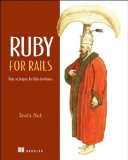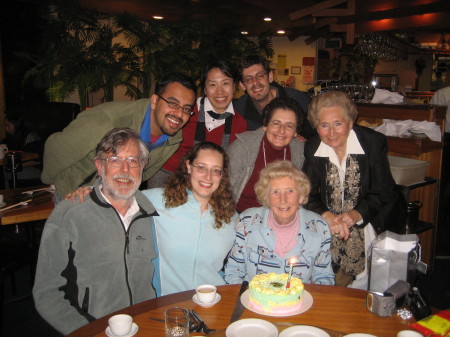A while back I bought a copy of Now, Discover your Strengths by Marcus Buckingham and Donald Clifton, and have only just got around to reading it. The book comes with a single-use code that lets you take an online personality test with 180 questions, with the aim of determining your 5 core strengths. The test takes about half an hour and is not onerous.
The book outlines one main idea. Find your natural talents and capitalize on these, building them up into strengths. Shape your work and life in ways that use your natural talents, as this will make you more effective, productive and happy. Although anyone can learn anything, people with a natural talent in an area are going to be able to reach a higher level of capability and success. Mitigate your weaknesses by partnering with people who have complementary strengths, developing a support system to help you, improving your skills in the area just enough to stop them from detracting from your strengths or simply stop doing things that play to your weaknesses.
The core concept of playing to your strengths is covered from many angles in the book and with supporting stories of successful people like Bill Gates and Warren Buffett. There is then a detailed description of each of the strengths that the online personality test can highlight. The last part of the book is interesting and focuses on building organisations which play to people’s strengths, management of people with different strengths and some thoughts on the staff review process in organisations.
Overall, the book was a very quick read with low information density. The online test was fun. You can see my results below. I don’t think it told me anything too new – I already know that I’m pretty analytical, like to learn, focus strongly on achieving tasks etc. The core idea about playing to and building your strengths does seem a good one from the personal satisfaction and cost/benefit point of view (assuming society values the areas you have talents in, and your areas of weakness don’t get in the way too often).
Please note that the following text is Copyright 2000 The Gallup Organization.
Analytical
Your Analytical theme challenges other people: “Prove it. Show me why what you are claiming is true.” In the face of this kind of questioning some will find that their brilliant theories wither and die. For you, this is precisely the point. You do not necessarily want to destroy other people’s ideas, but you do insist that their theories be sound. You see yourself as objective and dispassionate. You like data because they are value free. They have no agenda. Armed with these data, you search for patterns and connections. You want to understand how certain patterns affect one another. How do they combine? What is their outcome? Does this outcome fit with the theory being offered or the situation being confronted? These are your questions. You peel the layers back until, gradually, the root cause or causes are revealed. Others see you as logical and rigorous. Over time they will come to you in order to expose someone’s “wishful thinking” or “clumsy thinking” to your refining mind. It is hoped that your analysis is never delivered too harshly. Otherwise, others may avoid you when that “wishful thinking” is their own.
Learner
You love to learn. The subject matter that interests you most will be determined by your other themes and experiences, but whatever the subject, you will always be drawn to the process of learning. The process, more than the content or the result, is especially exciting for you. You are energized by the steady and deliberate journey from ignorance to competence. The thrill of the first few facts, the early efforts to recite or practice what you have learned, the growing confidence of a skill mastered—this is the process that entices you. Your excitement leads you to engage in adult learning experiences—yoga or piano lessons or graduate classes. It enables you to thrive in dynamic work environments where you are asked to take on short project assignments and are expected to learn a lot about the new subject matter in a short period of time and then move on to the next one. This Learner theme does not necessarily mean that you seek to become the subject matter expert, or that you are striving for the respect that accompanies a professional or academic credential. The outcome of the learning is less significant than the “getting there.”
Command
Command leads you to take charge. Unlike some people, you feel no discomfort with imposing your views on others. On the contrary, once your opinion is formed, you need to share it with others. Once your goal is set, you feel restless until you have aligned others with you. You are not frightened by confrontation; rather, you know that confrontation is the first step toward resolution. Whereas others may avoid facing up to life’s unpleasantness, you feel compelled to present the facts or the truth, no matter how unpleasant it may be. You need things to be clear between people and challenge them to be clear-eyed and honest. You push them to take risks. You may even intimidate them. And while some may resent this, labeling you opinionated, they often willingly hand you the reins. People are drawn toward those who take a stance and ask them to move in a certain direction. Therefore, people will be drawn to you. You have presence. You have Command.
Focus
“Where am I headed?” you ask yourself. You ask this question every day. Guided by this theme of Focus, you need a clear destination. Lacking one, your life and your work can quickly become frustrating. And so each year, each month, and even each week you set goals. These goals then serve as your compass, helping you determine priorities and make the necessary corrections to get back on course. Your Focus is powerful because it forces you to filter; you instinctively evaluate whether or not a particular action will help you move toward your goal. Those that don’t are ignored. In the end, then, your Focus forces you to be efficient. Naturally, the flip side of this is that it causes you to become impatient with delays, obstacles, and even tangents, no matter how intriguing they appear to be. This makes you an extremely valuable team member. When others start to wander down other avenues, you bring them back to the main road. Your Focus reminds everyone that if something is not helping you move toward your destination, then it is not important. And if it is not important, then it is not worth your time. You keep everyone on point.
Input
You are inquisitive. You collect things. You might collect information—words, facts, books, and quotations—or you might collect tangible objects such as butterflies, baseball cards, porcelain dolls, or sepia photographs. Whatever you collect, you collect it because it interests you. And yours is the kind of mind that finds so many things interesting. The world is exciting precisely because of its infinite variety and complexity. If you read a great deal, it is not necessarily to refine your theories but, rather, to add more information to your archives. If you like to travel, it is because each new location offers novel artifacts and facts. These can be acquired and then stored away. Why are they worth storing? At the time of storing it is often hard to say exactly when or why you might need them, but who knows when they might become useful? With all those possible uses in mind, you really don’t feel comfortable throwing anything away. So you keep acquiring and compiling and filing stuff away. It’s interesting. It keeps your mind fresh. And perhaps one day some of it will prove valuable.















